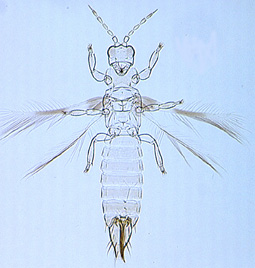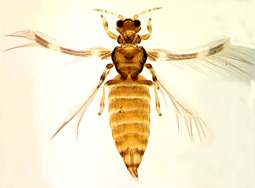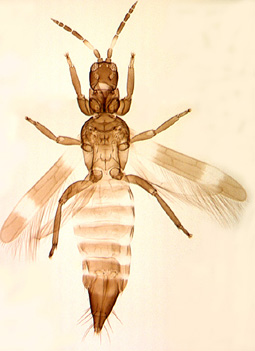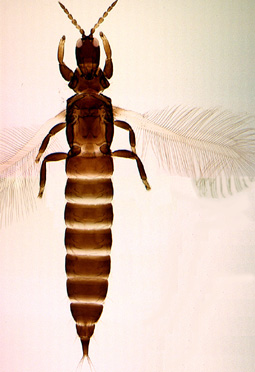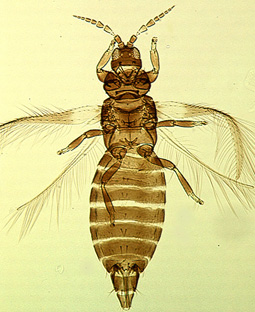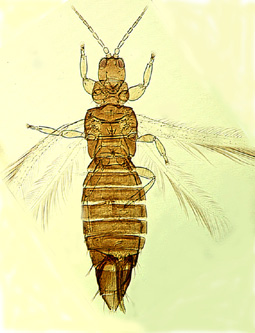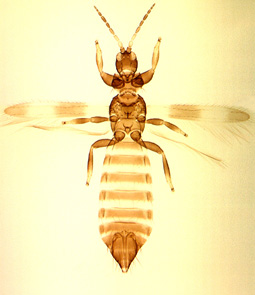|
Welcome to ThripsID2001
This work has three purposes:
Worldwide, more than 5000 species of Thysanoptera are known. This identification system to 180 species thus cannot be expected to provide more than a guide, and as such must be used with caution. However, although scarcely 1 in 30 of the described species is included, most of the thrips species that are found commonly in association with crops in all parts of the world can be recognised using this system. The 1400 photomicrographs of slide-mounted specimens of 180 species included here should enable a student to become familiar rapidly with the range of body form amongst thrips, and thus build-up the knowledge and confidence to learn to identify pest species accurately. These photomicrographs were taken with a JVC 3-chip camera, the multiple images at different focal planes being processed and amalgamated to maximise the depth of field, using the software Automontage from Synoptics Ltd., Cambridge, UK. Many of the best of these images are from specimens that were prepared especially for this photography. However, some of the images are from standard museum slide preparations, some of which involve specimens that are too dark for good photographic results.
ThripsID2001 is derived from two similar but much smaller systems that were produced during 1998 and 1999 under contract to the Australian Quarantine Information Service. The operating system, LucID, is developed at the University of Queensland, Australia, and information and contact addresses about this software, together with an on-screen Tutorial, are available by using the Help button on the main screen.
The authors will be pleased to receive comments
at the following addresses:
|
Chaetanaphothrips signipennis |
|
Anisopilothrips venustulus |
|
|
Desmothrips australis |
|
|
Haplothrips aculeatus |
|
|
Heterothrips arisaemae |
|
|
Holarthrothrips indicus |
|
|
Melanthrips ficalbii |
|
